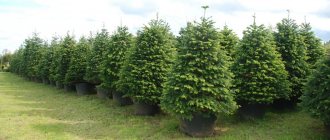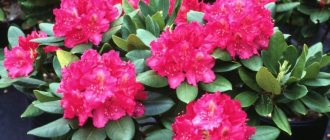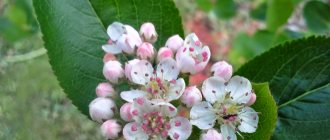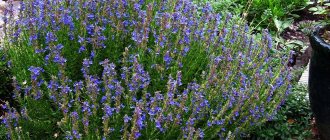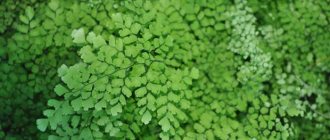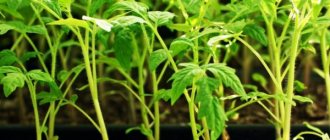Bushes and trees
0
411
Article rating
Kira Stoletova
Korean fir Silberlocke (Koreana Silberlocke) is an evergreen coniferous tree that is used in landscape design and garden landscaping. The tree was bred recently: the first appeared in Germany in the 20th century thanks to the work of the botanist Günter Horstmann.
Korean fir Silberlock
Brief information about the variety
- Color : gray, blue-gray needles.
- Height : the tree does not grow higher than 4.5 m.
- Crown width : the volume of the lower part varies from 1.5 to 3 m.
- In which regions does it grow : it takes root in all regions of Russia except Siberia and the far north.
- Features of planting : for successful cultivation, you should choose a lighted place.
- Immunity : fir is not resistant to the influence of fungus, spider mites, scale insects and aphids.
- Life expectancy : up to 50 years.
Growing regions
Silberlok is demanding not on the ambient temperature, but on the type of soil. But any soil can be enriched with the help of natural fertilizers and mineral mixtures, so the plant takes root in many regions of Russia.
Small fir grows easily in the middle zone - it is especially common in the Moscow, Pskov, Ryazan and Tula regions.
The climate of the Volga region, the south of Russia and the southern part of the North-West suits it. Some skilled gardeners grow it in the Western Urals and the Far East.
Where to plant Korean fir Silberlok
Beautiful fir in the garden (photo)
Silberlock can be planted in a spacious estate or in a small garden.
A good place. Firs do not like stagnant water. When planting, it is necessary to provide a drainage layer at least 10 cm thick. Crushed stone, broken brick, expanded clay or coarse sand can be used as filler.
Lighting. Many conifers, including firs, do not like the scorching sun. They burn out quickly in such conditions. Firs feel good in sunlight in the morning or no more than 8 hours a day. After planting, the plant needs to be shaded for a month.
Description of the plant
Silberlok fir is an evergreen plant that grows slowly. The name of the variety is translated as “Silver Curl,” which indicates the bluish-silver tone of the needles.
Adult specimens have a large conical crown, which in the conditions of the Middle Zone has an annual growth of 3-10 cm, depending on the quality of care. By the age of 30, the tree reaches only 4 m in height.
The needles are curled upward and soft to the touch. Its upper part is greenish, and the lower part has a silvery tint, so it seems that the plant has a blue color.
The cones deserve special mention. They grow upward from last year's branches and appear only by the age of 8.
The cones stand out due to their purple color and rather large size in relation to the tree: they grow up to 7 cm in length and 2 cm in diameter. The scales form a dense layer, similar to armor. They open only in autumn, when large winged seeds are released.
Diamond is a dwarf competitor
A natural dwarf, indispensable for edging paths, valued for its needles and crown, reminiscent of a pillow. This is not an artificially bred variety, but a natural dwarf form.
Advantages of Korean fir Diamond:
- reaches a height of no more than 0.5 m, annual growth is about 3-4 cm;
- the needles are two-colored: the upper part is dark green, glossy, the lower part is silver;
- the needles are soft, have a curved shape, grow up to 2 cm;
- emits a pleasant aroma when rubbing the branches in your hands;
Variety Brillant
- the variety takes root both in open ground and in containers due to its compact size;
- record holder for life expectancy, some specimens reach the age of 300 years.
It is possible to grow a Korean centenarian as an ornamental plant if you choose the right place for growing. Dwarf conifer does not tolerate drafts well, sunny places are suitable for it, light partial shade is allowed. Young plants require protection from winter cold and bright spring sun.
Adult specimens can withstand frosts down to -29 °C.
The tree is planted in the spring in a prepared hole with a drainage layer. It is advisable to take seedlings in a container with a dense earthen ball. Small plants require plenty of watering in the first years of life. Watering frequency – 2 times a month. In dry weather, you can water the soil as its top layer dries out, but you should not over-water it.
Rules of care:
- periodic loosening of the soil after watering;
- annual application of fertilizers for conifers, starting from the age of three;
- mulching the tree trunk circle with peat, sawdust or pine needles;
- covering young plants for the winter with spruce branches.
Video about the features of growing in open ground.
The coniferous dwarf does not need pruning for at least the first 15 years. If necessary, remove dried branches and needles in early spring. To maintain compactness, you can shorten the shoots by 1/3.
Landing
Silberlok must be planted in accordance with strict requirements.
Selection of seedlings
In order for a seedling to take root in Russian conditions, you need to buy a certified specimen from a nursery. Moreover, his age must exceed three years.
It is important that the plant has a strong root system, a smooth trunk, healthy bark and a neat crown shape. If you dare to propagate the variety with your own seeds or seedlings, do not forget to check the roots and carry out their timely disinfection.
To do this, the bottom of the fir is placed in a 5% manganese solution for 120 minutes and in a suitable antifungal drug for half an hour.
Preparing the site
The health of the tree depends on the correct planting
The location intended for landing is prepared in advance. It is worth starting three weeks before planting.
The soil is dug up and cleared of weeds and their roots. Ash is added, as well as mineral fertilizers: the fertile layer will nourish Silberlok for the next two years.
Artificial fertilizers can be supported by a nutrient complex of sand, peat and local soil with 100 grams of Nitroammofoska per 10 liters of the composition, mixed into the soil at the point of future planting.
Landing technology
- Dig a hole. For each plant, its volume is calculated separately: add 25 cm to the length of the larger fir root. So, the average depth is 80 cm, and the width should exceed the size of the root by 15 cm;
- Place drainage mixture on the bottom. It is made from coarse crushed stone, crushed brick or river gravel. Place part of it in a hole, and form a slide from the remains in the center. Moisten the roots in a clay solution and place along the edges of the hill;
- Cover the remaining space with soil. It is important to compact the earth well to eliminate the possibility of voids forming. There is 10 cm left to the top of the hole; lay out mulch from sawdust or tree bark, but so that the root collar is free.
Silberlock with twisting needles
Abies Koreana Silberlocke is a coniferous tree that grows up to 2, maximum 4-5 m. Branched shoots evenly cover the trunk and form a wide crown of regular shape.
Fir grows slowly, adding on average 8-12 cm per year. By the age of 10, the tree grows up to 1.5 m. The crown lends itself well to shaping. The needles of this variety are distinguished by their unusual shade and location. It is long, thick and curved. The needles curl so tightly that you can see their lighter shade on the back. The upper part is painted dark green. Thanks to this, an external effect is created, as if the needles shimmer in several shades.
The charm of Silberlocke
Another distinctive feature of the Korean fir Silberlocke is its decorative cones. They are blue-violet, like other varieties, resinous, located vertically on last year's branches. The length of the cones is 5-6 cm, they ripen on trees that are 7 years old. The variety is frost-resistant and can withstand drought. The tree is not demanding on the content of nutrients in the soil, but suffers from a polluted atmosphere.
Landscape combinations:
- Silberlock is a natural dwarf, suitable for creating multi-tiered compositions. The framing of paths and artificial reservoirs cannot be done without it.
- The ideal pair for the silvery beauty will be barberry, spirea, viburnum, and puerpus.
- Silberloc is considered a suitable plant for heather and Japanese gardens with ponds and natural stones.
If you want to create a forest style on your site, then you should play with the contrast of shades of pine needles, giving preference to fir, Strict juniper with gray-blue pine needles and golden thuja. To make the composition natural and rich, add rock alyssum, fern and cranberries.
Evergreen garden decoration
Agricultural technology for growing the Silberlock variety
Planting and care require care, since the root system of the conifer is located close to the soil surface. This is important to consider when choosing a location and creating compositions from several plants. Fir trees are planted at a short distance, about 0.5-1 m. Over time, the tree will grow, so you need to stock up on space in advance. For a hedge, a distance of 1-2 m is maintained between seedlings.
Slightly acidic and slightly alkaline soils are suitable for cultivation. The plant loves light, so open spaces are selected for placement. Young seedlings suffer from frost and bright spring sun, so at this time of year they need shelter. Adult specimens can withstand sunlight and cold without loss of decorativeness.
Step-by-step instruction:
- For planting, seedlings over 4 years old are selected. Planting work is carried out in April or May. Container crops can be planted even in hot summers.
- A hole is dug a little larger than the root system. It is filled with a drainage layer, organic fertilizer, and covered with nutritious soil.
- Fir is planted so that the root collar rises 1.5 cm above the soil level. This is the only conifer for which this rule applies.
- After planting, the tree trunk circle is compacted and thoroughly watered.
Cones on the branches
Growing conifers need to be watered frequently: once every 10-15 days. It is enough to moisten adult specimens 1-3 times per season. In dry weather, the frequency of watering is doubled. After the next moistening, the soil is loosened no deeper than 6-12 cm due to the close location of the roots. The procedure provides air access to the root system and eliminates weeds. Mulching helps maintain normal moisture levels. Sawdust, pine needles or bark are placed in a circle around the trunk in a layer of 8-10 cm.
In spring, all dried branches must be removed. Although the crown of the Korean fir forms on its own, it is not superfluous to trim it in order to preserve its decorative appearance. The shoots are shortened by no more than a third, otherwise the tree will weaken. For density, the central shoots are pruned. 4 years after planting, you can start feeding. 1-2 procedures per season are enough. For feeding, choose liquid complexes for conifers.
Care
Watering
Caring for Korean fir cannot be called labor-intensive: it easily tolerates low levels of air humidity.
During the growth period, young plants can get by with natural moisture. The sprinkling method should be interrupted only if there has been no precipitation for more than 14 days.
An adult tree, even during a drought, will not need moisture from outside. Deep roots allow it to reach even groundwater.
Feeding
When planted, the fir receives nutrients that will be enough for the next two years of intensive growth.
In the next 40 years, every spring, you need to apply complex mineral fertilizers. Among professional gardeners, Kemira, Fertik, Florovit, “For Conifers” from Forte or Compo, and other preparations with a similar composition are reputable.
Mulching and loosening the soil
Compaction of the upper layers of soil can lead to the death of the plant, so loosening is a mandatory process every two weeks. Weeds under the fir should be removed as they appear.
You can stop vigilant care when you reach the age of three: the roots will become powerful enough to receive oxygen even in harsh conditions.
Mulching is usually carried out immediately after planting. Sawdust, straw or dry leaf litter mixed with bog peat are suitable.
Trimming
Fir does not need crown formation
Artificial intervention in the formation of the crown of Korean fir is not required. Blue needles by themselves form a pyramidal dome, which has high decorative properties.
But if the soil where the tree was planted is particularly fertile, the plant may overdo the lengthening of the branches and lose its former appearance. In this case, partial correction of long ones will be necessary, as well as cutting off dry or painful branches.
Preparing for winter
An adult tree should be covered with thick mulch around the roots. And two weeks before the predicted frosts, it needs to be switched to a moisture-recharging irrigation mode.
Young fir responds much more sensitively to temperature changes.
A seedling up to three years old requires regular moistening, hilling and mulch 15 cm thick, covering with a special bag and tightening. The top of the plant is usually covered with spruce branches and sprinkled with snow.
Reproduction
Korean blue fir Silberlok reproduces vegetatively, but it is extremely difficult to create suitable conditions for natural propagation of the plant. Therefore, gardeners use the seed method or simply graft young cuttings.
Propagation by seeds
- In the first months of spring, prepare several fir cones: the seeds should be stratified naturally. To do this, planting material is kept at sub-zero temperatures for at least 35 days;
- Before planting, the seeds are immersed in warm water mixed with a growth accelerator for conifers for a day. This will help the plants acquire resistance to diseases and cold;
- The soil used is a mixture of turf soil, sifted river sand and swamp peat. Any other soil mass that has a slightly oxidized pH environment is suitable;
- Planting material should be buried in small holes 6 cm deep. The top of the sown soil is covered with film, and when the sprouts reach 10 cm, they should be moved into separate containers.
Grafting method
- In spring, branches 10 cm long are cut from the mother plant. Planting material must be completely healthy and lignified.
- The next stage is cutting on the tree. It is necessary that the height of the cut exceeds the point of location of the lower branch by 2-3 cm. The bare cuttings are implanted into the mother plant with the support of a special mixture of the Kornevin type for 12 hours.
- After this, it is recommended to move the cuttings to a greenhouse. Periodically, they will need to be watered, artificially moistened and fed until a full-fledged root system is formed, which will take at least 4 months.
Results
To successfully grow Silberlok fir, you need to pay attention to the following main points of care:
- Choose the right place to plant.
- Prepare the seedling and area for planting according to the recommendations.
- Land according to the instructions.
- Water, loosen and mulch the root circle of young trees in a timely manner.
- Cover young trees for winter.
Relatively recently, the Korean fir Silberlok appeared on the territory of Russia - and it immediately won its audience among landscape designers. The shrub differs from other plants in its chic appearance - bluish needles and pointed dark cones.
Fir Silberlok - a living decoration of your garden
Diseases and pests
The tree does not tolerate transplantation well
Abies Koreana Silberlocke is not resistant to disease, and pests often choose it as a habitat.
Most often, the plant is negatively affected by fungal diseases, especially if it was replanted or grown at the wrong temperature. Therefore, the best way to protect against infections is considered to be a one-time landing in a comfortable place.
The affected tree is unlikely to be cured, but folk remedies can be used. The process of controlling insect pests is more complex.
- A light coating on the needles is a sign of the appearance of Hermes aphids. Prevention against its invasion is carried out with the help of green manure - for Silberlok they are pine and spruce. Insecticides are suitable for treatment;
- Brownish honey drops indicate the vital activity of scale insects on the needles. In spring, a bag impregnated with a chemical composition against caterpillars is put on the plant;
- The tick reveals itself by weaving a thin web right on the crown. It usually appears in the garden during drought, so when watering you need to irrigate not only the ground, but also the needles. An infusion of dandelion and garlic applied to the affected areas is considered a control measure.
Use in landscape design
Silberlock fir is considered a favorite of landscape designers. This status is due to its quite reasonable price, as well as great decorative potential in design.
The blue tone of the needles and neat cones give the site or plant composition a special oriental charm.
Single specimens of evergreen plants and entire rows of them are used both in landscaping private areas and in recreating parks in large populated areas.
How to use:
- plant in straight lines to imitate an alley along the perimeter of a nondescript garden path;
- suitable for marking the boundaries of a rockery when creating a Japanese garden;
- the plant does not lose color even in winter, therefore it is actively used in landscaping cool northern territories;
- the culture looks good when planting a background for an alpine hill or lawn, although it does not originally grow in the Alps;
- used as a tapeworm in the middle of decorative lawns and flower beds;
- fits into compositions with barberry, red maple, spirea, birch, thuja and juniper bushes.
